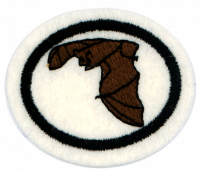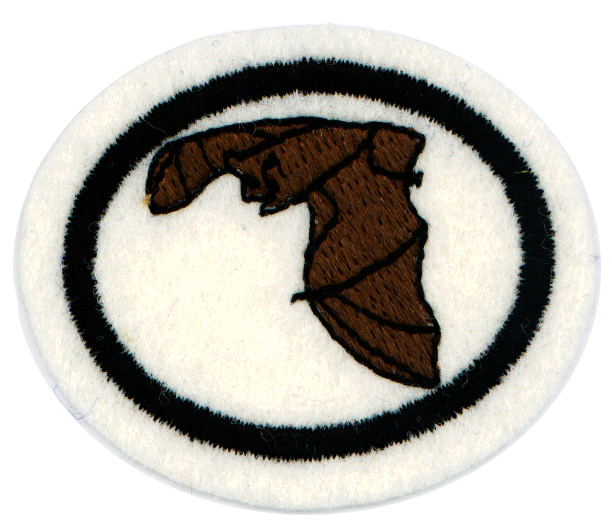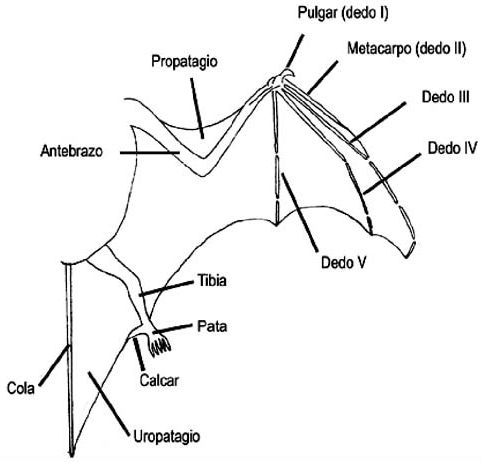Difference between revisions of "AY Honors/Bats/Answer Key/es"
(Created page with "El '''calcar''' es una estructura ósea que conecta la pierna hasta la cola. <br /> El '''trago''' es una característica que los murciélagos tienen en común con los humanos...") |
(Created page with "* '''b. Polinización y esparcir semillas.''' Los murciélagos sirven como polinizadores de plantas de alimentos.") |
||
| Line 175: | Line 175: | ||
</div> | </div> | ||
| − | + | * '''b. Polinización y esparcir semillas.''' Los murciélagos sirven como polinizadores de plantas de alimentos. | |
| − | *'''b. | ||
| − | |||
| − | + | * '''c. Proporcionan un medio para la investigación médica.''' Sus habilidades de ecolocalización han sido estudiados para ayudar a los médicos profesionales ayudar a los ciegos. Un agente químico en la saliva del murciélago vampiro, Draculin, está siendo probado para su uso en ayudar a las víctimas de apoplejía. | |
| − | *'''c. | ||
| − | |||
| − | + | <noinclude></noinclude> | |
| − | <noinclude | ||
| − | |||
{{CloseReq}} <!-- 15 --> | {{CloseReq}} <!-- 15 --> | ||
{{ansreq|page={{#titleparts:{{PAGENAME}}|2|1}}|num=16}} | {{ansreq|page={{#titleparts:{{PAGENAME}}|2|1}}|num=16}} | ||
| Line 194: | Line 188: | ||
</div> | </div> | ||
| − | + | {{clear}} | |
| − | |||
| − | |||
| − | + | {{clear}} | |
| − | |||
| − | |||
| − | + | {{clear}} | |
| − | |||
| − | |||
| − | + | {{clear}} | |
| − | |||
| − | |||
| − | + | {{clear}} | |
| − | |||
| − | |||
| − | + | {{clear}} | |
| − | |||
| − | |||
| − | + | {{clear}} | |
| − | |||
| − | |||
| − | + | <noinclude></noinclude> | |
| − | <noinclude | ||
| − | |||
{{CloseReq}} <!-- 16 --> | {{CloseReq}} <!-- 16 --> | ||
| − | <noinclude> | + | <noinclude></noinclude> |
| − | </noinclude> | + | ==Referencias== |
| − | == | + | [[Category:Adventist Youth Honors Answer Book/es]] |
| − | [[Category:Adventist Youth Honors Answer Book | + | <noinclude></noinclude> |
| − | <noinclude | ||
| − | |||
{{CloseHonorPage}} | {{CloseHonorPage}} | ||
Revision as of 04:08, 5 April 2021
| Tip for earning from home during the pandemic | |
| To earn requirement 16 you will need tools and building materials. If you have access to these, it is possible to earn this one from home. |
1
Aquí hay algunos identificadores para mamíferos, pájaros y murciélagos. Después de examinar la lista, debería ser bastante obvio cuánto más son los murciélagos como los mamíferos:
Mamíferos:
- Pelo
- Dan a luz a crías vivas (menos el ornitorrinco)
- Los bebés amamantan de la madre
- Sangre caliente
- Cuatro patas usualmente con dedos en los pies y/o «manos» y «pies»
Murciélagos:
- Tienen pelo
- Un bebé murciélago nace vivo
- Los bebés amamantan de la madre
- Tienen sangre caliente
- Los murciélagos tienen brazos, manos y patas
Aves:
- Las aves tienen plumas, no pelo
- Salen de huevos
- Los bebés se alimentan desde la boca de la madre
- Tienen alas, pero no manos ni dedos
2
Los murciélagos son los «únicos» mamíferos que realmente pueden volar (otras especies tales como las ardillas voladoras en realidad se deslizan en vez de volar).
3
Bats are in the order Chiroptera, which literally means "hand-wing" in Latin. This name makes sense because a bat's wings stretch over the forearm and fingers, and attach down at the ankle bones. The name is from the Greek, Cheir=hand; Pteron=wing. They got this name when scientists noticed that they fly with a modified hand.
4
- Largest: The biggest flying mammals are the Flying Foxes, particularly those living in Asia and Australia. Several species have a length of 45 cm (17.7 in), a wingspan of 1.7 m (5 ft 7 in), and a weight of 1.6 kg (3.5 lb). The Indian Flying Fox in particular has been known to attain a wingspan of 6 feet.
- Smallest: The world's smallest bat is the Kitti's Hog-Nosed Bat (a.k.a. The Bumblebee Bat) of Thailand. Weighing less than a penny and with a wingspan of less than 5 inches it is also the worlds smallest mammal.
5
There are approximately 1000 species of bats in the world, and bats live on every continent except Antarctica. There are approximately 825 species of Micro-chiroptera worldwide, and about 175 species of Mega-chiroptera.
6
- a. Mega-chiroptera
- b. Micro-quirópteros
7
- a. Megabats: Use eyesight.
- b. Micro-quirópteros: Usan la ecolocalización. (Los murciélagos emiten ondas de sonido usando la boca o la nariz. Cuando el sonido choca contra un objeto un eco regresa. El murciélago puede identificar un objeto por el sonido del eco. Incluso pueden saber al tamaño, la forma y la textura de un pequeño insecto de su eco. La mayoría de los murciélagos usan la ecolocalización para navegar en la oscuridad y encontrar comida.)
8
The megabats are called fruit bats because many of them eat fruit, nectar, and pollen.
9
The microbats are generally insect-eating, although they tend to have a much more varied diet than the megabats. Besides Insects, microbats eat anything from nectar and fruit like megabats, fish, small mammals and birds, and even blood.
10
Most bats have one baby per year, though some have twins or triplets. Baby bats are called pups.
11
Leviticus 11:19: The stork, any kind of heron, the hoopoe and the bat. (Unclean animals you should not eat)
Deuteronomio 14:18 - la cigueña, la garza según su especie, la abubilla y el murciélago.
Isaías 2:20 - Aquel día arrojará el hombre a los topos y murciélagos sus ídolos de plata y sus ídolos de oro, que le hicieron para que adorase
12
In the cold climates bats either hibernate or migrate to warmer locations. Bats living in the tropical zones stay active year round.
13
Knee, tail membrane, tail, calcal, foot, wing membrane, fingers, wrist, ear, tragus, forearm, thumb.
El calcar es una estructura ósea que conecta la pierna hasta la cola.
El trago es una característica que los murciélagos tienen en común con los humanos, siendo la parte carnosa de la oreja por encima del lóbulo y al lado del templo.
14
600 - 1,000 insects per hour according to their body weight. A single brown bat can eat 1,200 insects per hour.
15
- a. Eat insects. A single brown bat can eat 1,200 insects per hour (3,000 - 7,000 per night). Bats eat such harmful insects such as cockroaches, mosquitoes, and gnats. Large colonies of bats can consume many insects that would otherwise harm farmers' crops.
- b. Polinización y esparcir semillas. Los murciélagos sirven como polinizadores de plantas de alimentos.
- c. Proporcionan un medio para la investigación médica. Sus habilidades de ecolocalización han sido estudiados para ayudar a los médicos profesionales ayudar a los ciegos. Un agente químico en la saliva del murciélago vampiro, Draculin, está siendo probado para su uso en ayudar a las víctimas de apoplejía.
16
You can find online plans to build your own bat house here.




